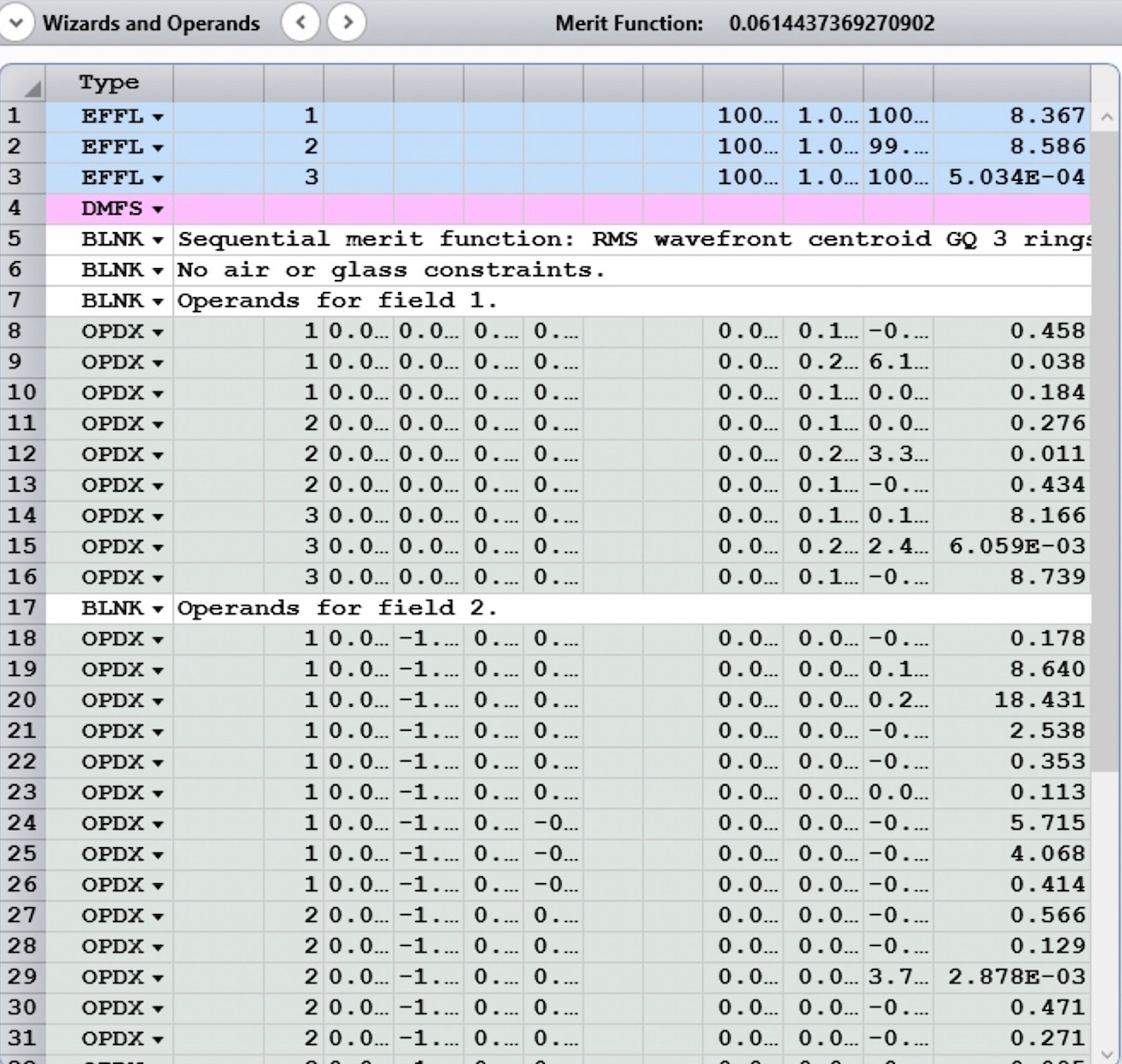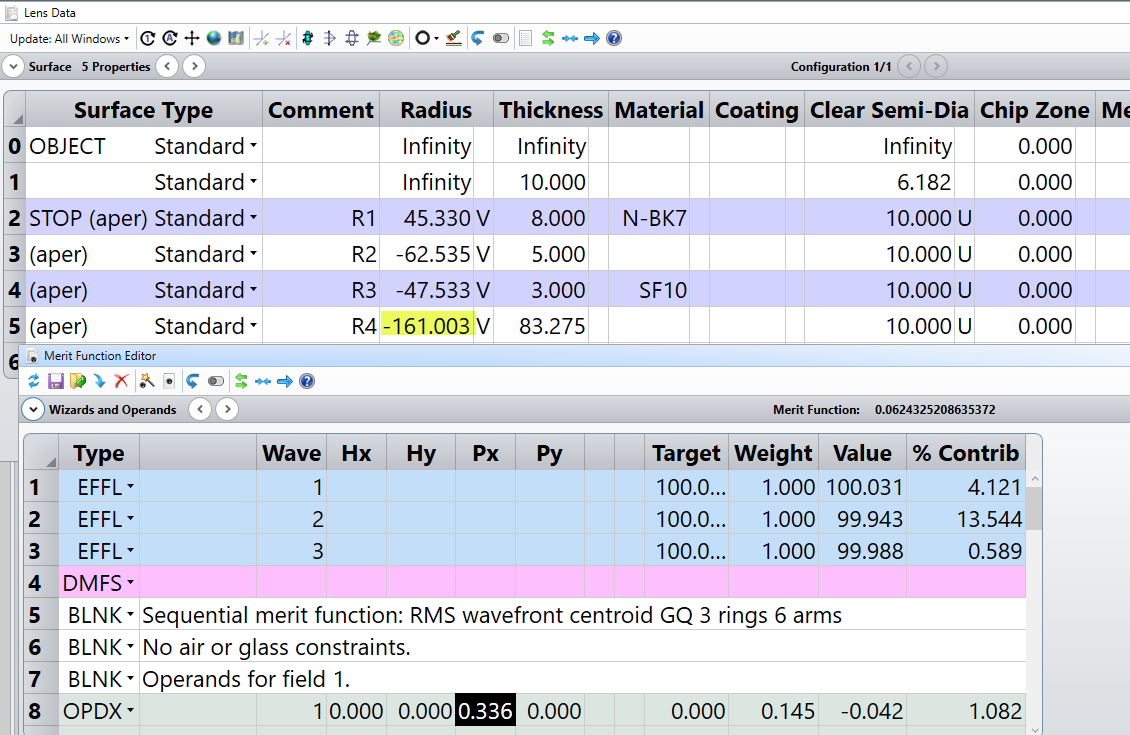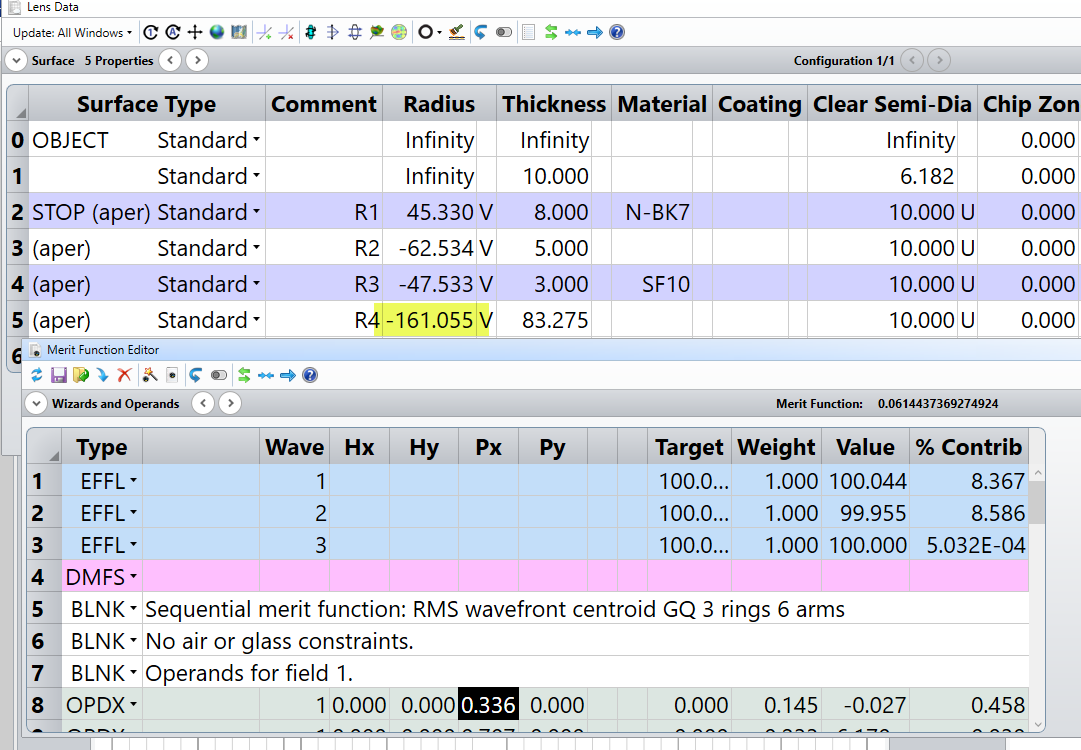Dear Zemax Community!
I am doing some learning and practice in Optical Lens Design using YNU raytracing. It is quite fascinating to put paraxial functions in the spreadsheet and work out how ray bends (chromatic and aberrations) at each surface defined during propagation. Big shout out to Kats at “Lens Design - A Pencil of Rays” for spending lots of his time to put all the materials together.
I have an issue about the comparison of the results obtained from YNU raytrace with the ZEMAX Merit function. The curvature of each lens surface is quite close between YNU and ZEMAX, however the ZEMAX results is still not as good as parameters extracted from YNU. I think the root cause is with the define and setup of the merit function. 😵 I tried a long time last night with all different settings and parameters.
The telescope objective consists of a crown and flint lenses (see Fig.1), the key parameters are listed below:
- Focal length is designed to be 100mm
- F/# of 5, means D is 20mm
- Crown is N-BK7 and flint is SF10
- Crown has a thickness of 8mm, flint is 3mm. The air gap is 5mm
- Used wavelength F, d, and c in ZEMAX and YNU Rayrace calculation

Please see the Table.1 below, the last two columns are the final results from YNU and ZEMAX optimzations. They are quite close, however, I tried all sorts of things but could not get the R4 of ZEMAX to bend more. The motivation is through lens bending, to improve the spherical aberration (SA), Coma (CM) and Chromatics. All depends on the lens power. Here other 3rd order aberrations are not considered to be optimized.
In Table. 3, the last column shows the target values for SA, CM and Chromatic, 0.03, 0.01, and 0.0015. You can see that the YNU iteration 3 (the 4th column) achieved the target, but the ZEMAX’s SA doesnt...
|
| YNU Raytrace | ||||
| Curvature | initial | 1 | 2 | 3 | ZEMAX |
| R1 | 50 | 50 | 44.25 | 44.7 | 45.33 |
| R2 | -53.173 | -53.173 | -61 | -60.16 | -62.535 |
| R3 | -60 | -53.0012 | -46.3656 | -46.336 | -47.533 |
| R4 | -791.35 | -285.92 | -169.27 | -168.876 | -161.003 |
Table.1 Four surface curvatures for the crown and flint lens. Iteration 1 to 3 are obtained from YNU whereas the fourth column is from ZEMAX.
| Iterations | initial | 1 | 2 | 3 | ZEMAX | Target |
| Spherical Aberration | 6.497663 | 4.535099 | -0.15034 | 0.010082 | -0.10144 | 0.03 |
| Coma | -0.60336 | -0.54679 | 0.126841 | 0.071973 | 0.090979 | 0.1 |
| Astigmatism | 1.250316 | 1.28068 | 1.376386 | 1.372256 | 1.346841 | - |
| Petzval Sum | 0.673154 | 0.674524 | 0.66874 | 0.669346 | 0.671332 | - |
| Field Curvature | 1.923471 | 1.955204 | 2.045125 | 2.041602 | 2.018173 | - |
| Distortion | -0.09593 | -0.07951 | -0.08492 | -0.08318 | -0.07309 | - |
| Longitutional Chromatic | 0.001178 | 0.00112 | 0.001204 | 0.001158 | 0.001779 | 0.0015 |
| Transverse Chromatic | -0.00255 | -0.00246 | -0.00251 | -0.0025 | -0.00235 | - |
Table. 2 Third order aberration calculated in YNU. Due to the lens geometry, here we only focus on Spherical Aberration (0.03), Coma (0.1), and Longitudinal Chromatic (0.0015).
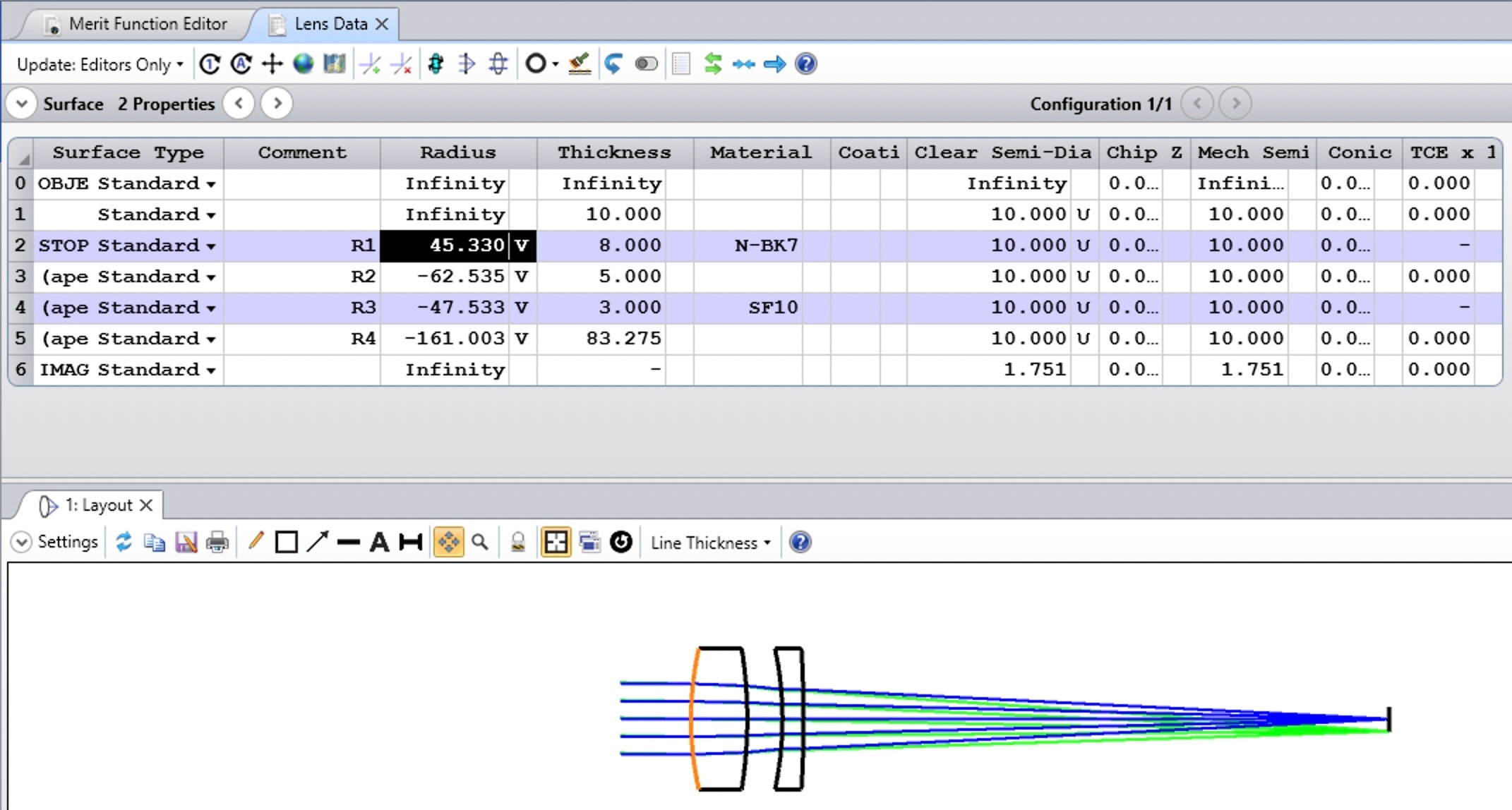
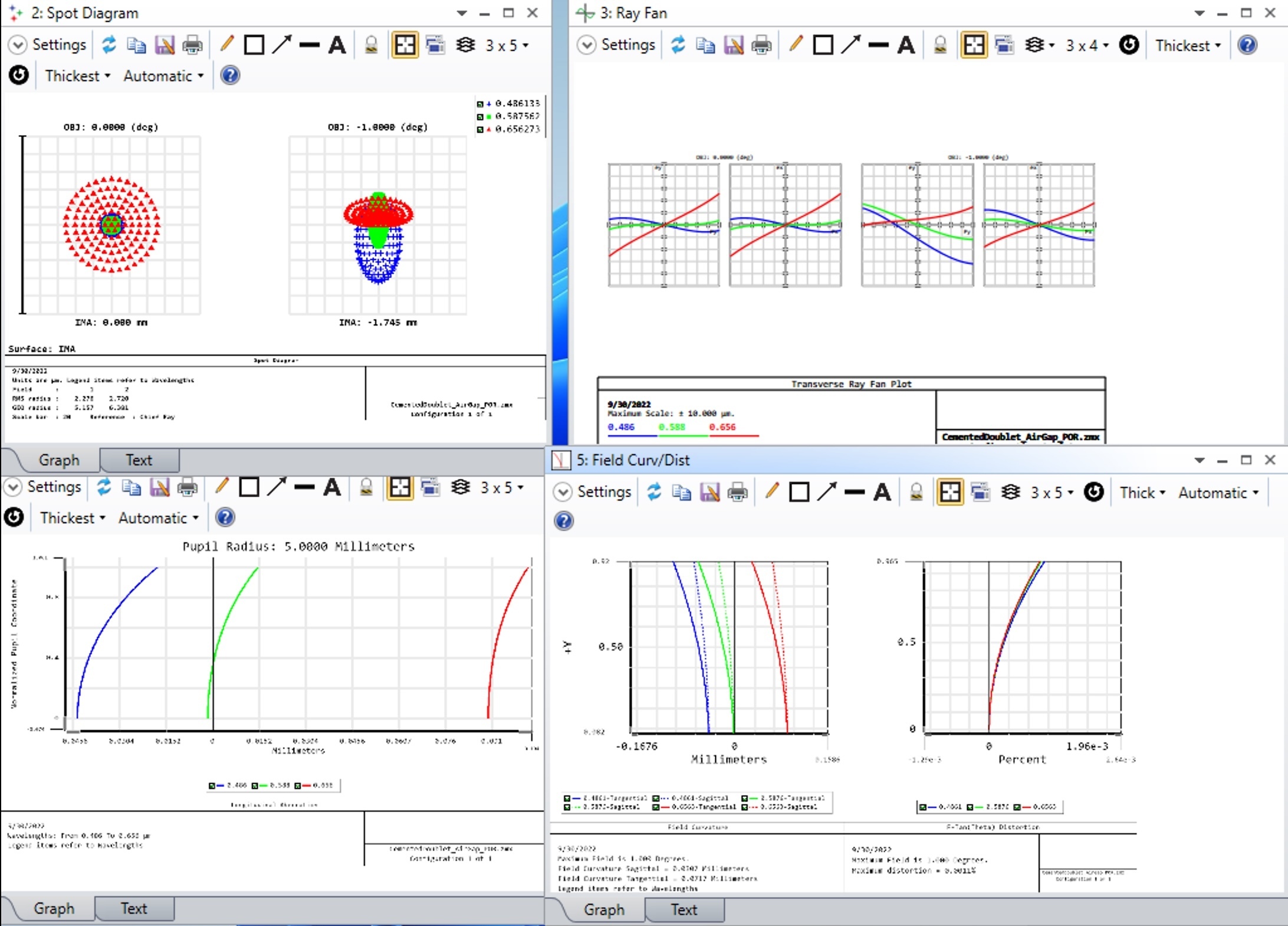
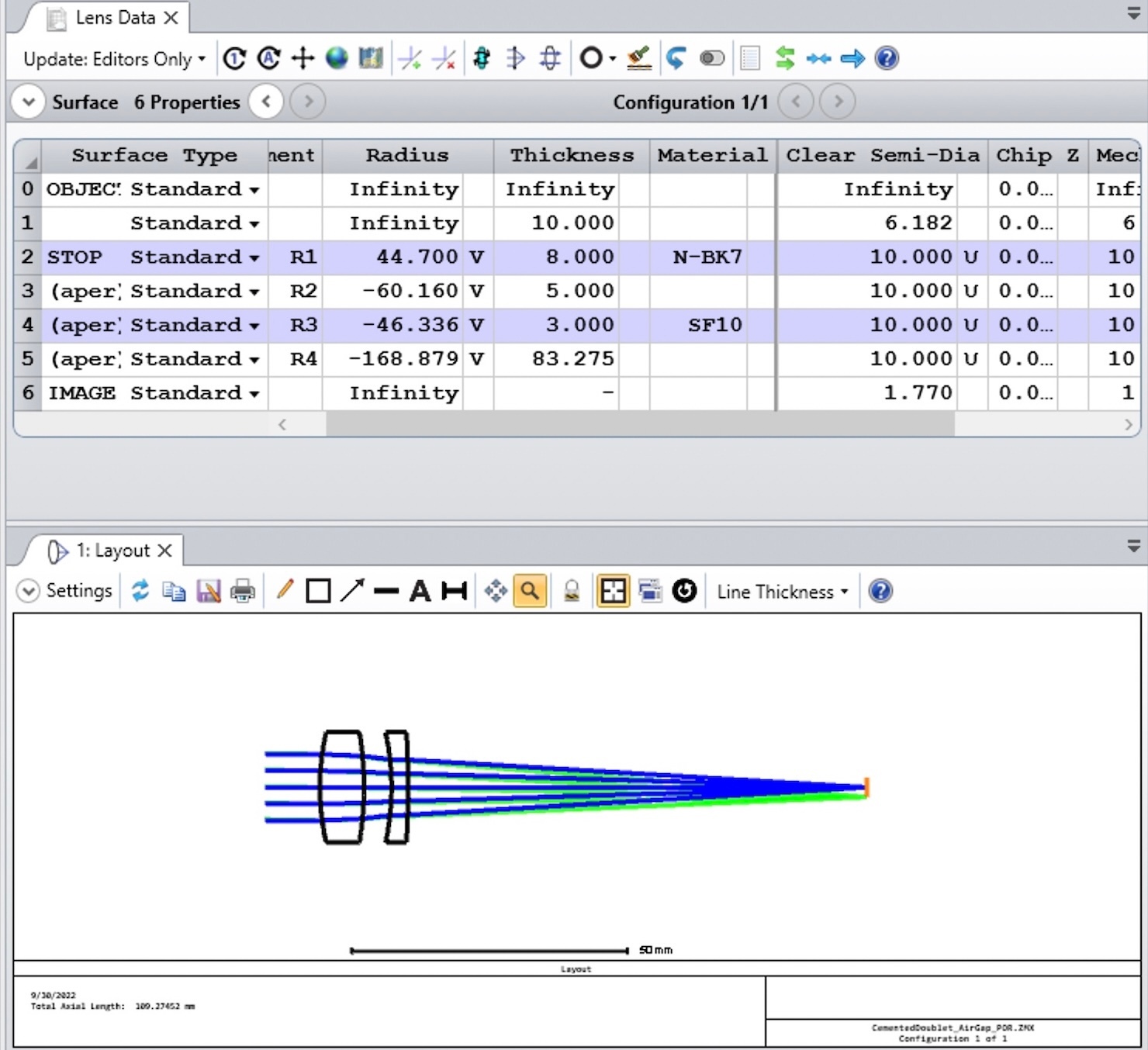
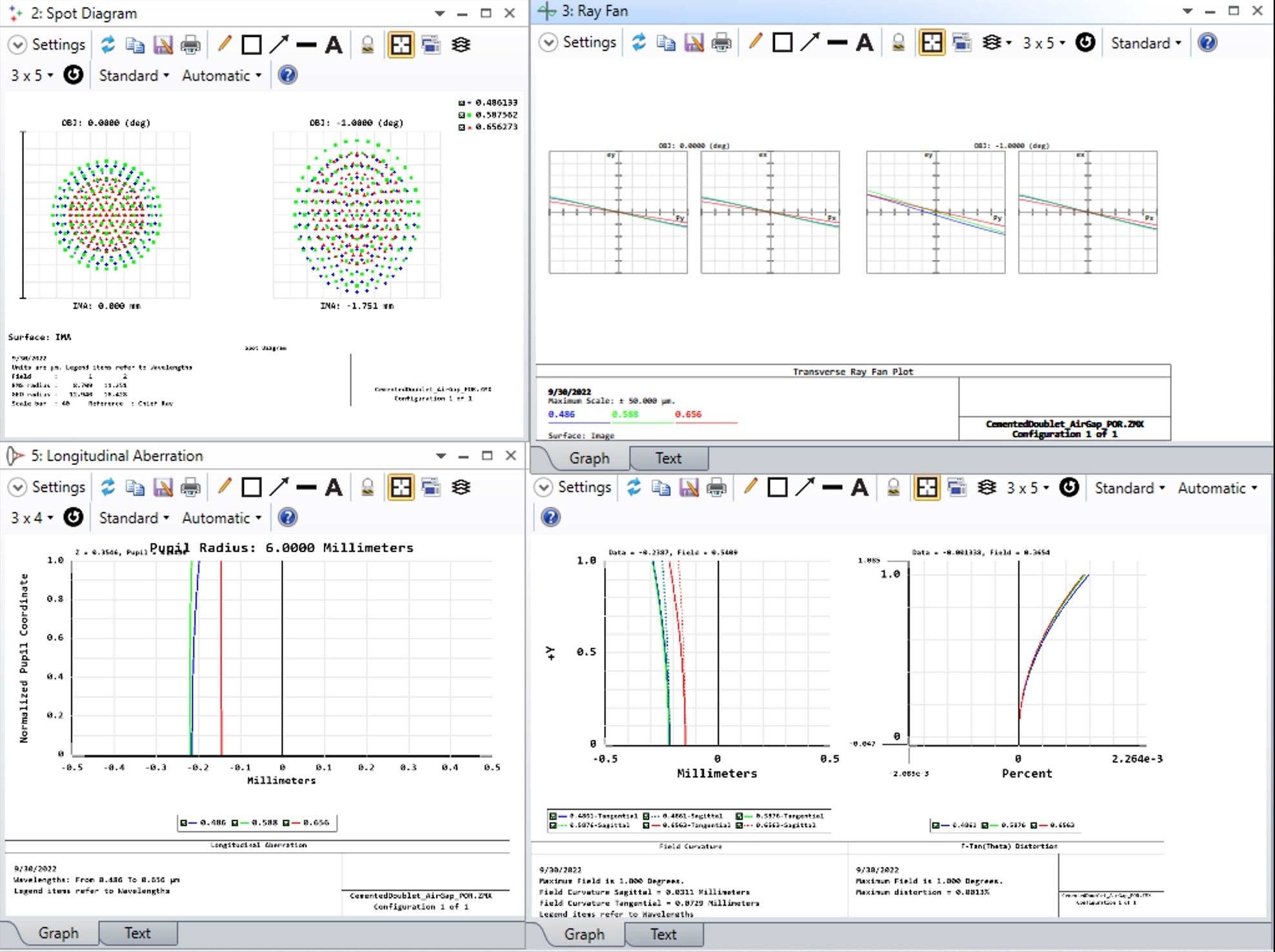
The merit functions that I used for ZEMAX in Figure.2 shows here. I think the problem is here, but I could not figure out. In the end, I have attached the zmx file in case. If you guys can give me some suggestions to improve the merit functions?
